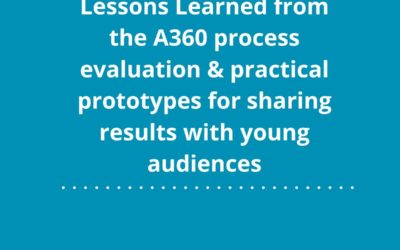Purpose
To discuss ‘What does it mean to engage youth meaningfully in HCD+ASRH programs?’ The webinar mapped out ways youth are integrated in the different stages of ASRH programs and the HCD process. It also explored how the HCD process facilitates meaningful youth engagement including the potential challenges that may come up.
 Presenters
Presenters
Himanshu Kumar
HCDExchange Youth Leadership Associate
Dr Anastasia Mirzoyants
Head of Learning and Knowledge, Shujaaz.inc
Linet Michael
Junior Graphic Designer, Shujaaz Inc.
Arzoo Gargl
Implementation and Training, YP Foundation
Heran Birhanu
Human Centered Designer, PSI Ethiopia
Empowering youth to take control of their lives by identifying and breaking barriers – Shujaaz.inc
Insights
- Shujaaz puts young people at the center of everything they do and encourages them to take leadership roles.
- The introduction of the concept of play and gamification are used to better understand barriers, stereotypes, mindsets and motivations of youth. The use of games and play creates an informal setting where youth can truly express themselves and how they feel.
- The use of role playing allows young people to share personal stories from a distance. This proves to be very helpful in discussing stigmatised topics.
Building capacity for young people in SRHR rights – YP Foundation
Insights
- In the YP foundation, youth are not just participants, they are professionals who have a say in the curriculum.
- Recognition of youth as participants inspires adolescents to become educators and start initiatives in their own communities, to advocate for the rights of young people in their communities and families.
- Involving educators, teachers and parents in curriculum drafting and review addresses backlash that youth educators might face.
Using HCD to bring in a youth perspective to the programs- PSI Ethiopia
Insights
- Youth engagement improved the effectiveness of the A360 program implementations and encouraged youth to play an active role as planners of the future of the program.
- The HCD process was used to build youth to youth relationships and interactions throughout the HCD process, and complement young designers representation of youth perspectives. Having platforms to engage with other young designers helped designers to strengthen their stance as youth advocates.
- The HCD process was used by young designers to voice their concerns and challenges to program decision-makers and leadership
 Key Points
Key Points
- Gamification and concept of play can help us understand barriers faced by young people by creating room for them to open up and share.
- Engaging youth as more than participants but as professionals can build their capacity and empower them to become advocates for young people in their communities and families.
- Using HCD can increase the effectiveness of program implementation by encouraging youth to play active roles.
 Follow-up Questions
Follow-up Questions
- What can be done to engage youth in long term HCD+ASRH programs?
- How have the learnings from the young designers’ conference informed the creation of youth-adult partnerships in the Smart Start Ethiopia intervention?
- How has human-centered design versus other approaches been used to inform better ASRH program outcomes?



